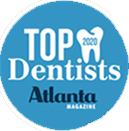Common Dental Problems for Orthodontics
Here are some common dental problems found in orthodontics. Occlusion is how your teeth come together when you close your jaw. Your Occlusion is influenced by three primary components: (1) teeth, (2) nerves and muscles, and (3) bones. Another factor, which can affect the way your teeth come together, is your posture. The term Malocclusion is a general term that we use to describe a mismatch of tooth size, jaw size and the way that teeth fit together, one jaw with the other. We have identified some of the common problems. Your teeth may fit the description of one or more.
The Classification of Teeth
The Ideal Occlusion
An ideal occlusion is that which shows a perfect smile line, there is no crowding, no overlap, no rotations or spacing of teeth. In a perfect world, there is a perfect pattern in the closure of 32 permanent teeth. This ideal occlusion rarely exists. A normal occlusion is one that shows some deviation from that of the ideal but is aesthetically acceptable and functionally stable for the individual.
Class 1 Occlusion
Class I is a normal relationship between the upper teeth, lower teeth, and jaws or balanced bite.
Class 2 Occlusion
Class II is where the lower first molar is posterior (or more towards the back of the mouth) than the upper first molar. In this abnormal relationship, the upper front teeth and jaw project further forward than the lower teeth and jaw. There is a convex appearance in profile with a receding chin and lower lip. Class II problems can be due to insufficient growth of the lower jaw, an overgrowth of the upper jaw or a combination of the two. In many cases, Class II problems are genetically inherited and can be aggravated by environmental factors such as finger sucking. Class II problems are treated via growth redirection to bring the upper teeth, lower teeth and jaws into harmony.
Class 3 Occlusion
Class III is where the lower first molar is anterior (or more towards the front of the mouth) than the upper first molar. In this abnormal relationship, the lower teeth and jaw project further forward than the upper teeth and jaws. There is a concave appearance in profile with a prominent chin. Class III problems are usually due to an overgrowth in the lower jaw, undergrowth of the upper jaw or a combination of the two. Like Class II problems, they can be genetically inherited.
Other Dental Problems
Impacted Teeth
Impactions can be caused by improper positioning of the developing tooth bud, by excessive lack of space, or by the early loss of baby teeth. Wisdom teeth are the most commonly impacted teeth, but canines and premolars can also become impacted.
Missing Teeth
The number of teeth affects the look or aesthetic appearance of the smile and the function of the jaws and the teeth. In cases of missing anterior (front) teeth, symmetry plays an important role in whether it is best to have a missing tooth/teeth replaced or the space of the missing tooth closed. Missing teeth may result from hereditary causes (quite common) or environmental factors such as decay, accidents where teeth may have been knocked out, or the failure of teeth to erupt, which leads to an impaction.
Crowding
Crowding is the lack of space for all the teeth to fit normally within the jaws. Crowding occurs when there is disharmony in the tooth to jaw size relationship or when the teeth are larger than the available space. Crowding can be caused by improper eruption of teeth and early or late loss of primary teeth.
Teeth Spacing
Spacing is an excess of space for teeth which results in gaps between the teeth. This problem generally occurs when the teeth are smaller than the available space. Spacing can also be caused by protrusive teeth, missing teeth, impacted teeth or abnormal tissue attachments to the gums.
Crossbites
A crossbite can occur in the front and/or the sides of the mouth: One or more upper teeth fit inside of the lower teeth. This can occur with a single tooth or multiple teeth. Early correction (usually before age 11) is strongly recommended. After this age, the crossbite may only be able to be corrected with surgery.
Openbite
An open-bite is an insufficient vertical overlap of the teeth. It is caused by oral habits such as tongue thrust, digit sucking or by uneven jaw growth. Timing of treatment is critical to the overall success of the therapy: usually, the younger, the better.
Overbite
An overbite occurs when the upper front teeth protrude over the lower front teeth. Generally, there is no contact between the upper and lower front teeth. Often the lower front teeth are completely covered by the upper front teeth.
Overjet
Overjet is also known as protrusion. In this case, the lower front teeth are too far behind the upper front teeth. This can be caused by an improper alignment of the molars, a skeletal imbalance of the upper and lower jaw, flared upper incisors, missing lower teeth or a combination of all the above. In addition, oral habits such as thumb-sucking, finger sucking or tongue thrusting can exacerbate the condition.
Underbite
An underbite occurs when the lower front teeth protrude past the upper front teeth. It is usually caused by undergrowth of the upper jaw, overgrowth of the lower jaw, or a combination of the two. Early correction of underbite is strongly recommended: usually, the younger, the better.

